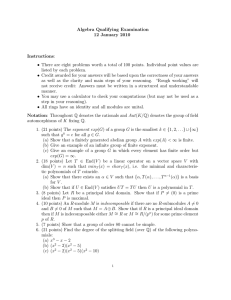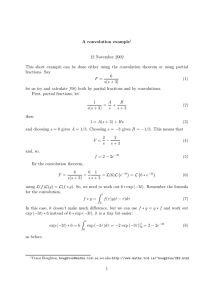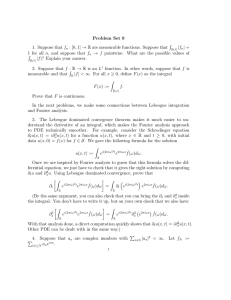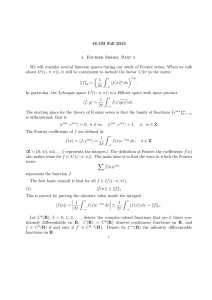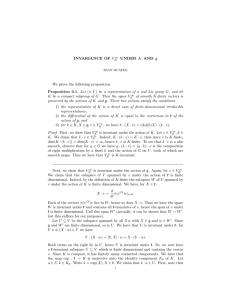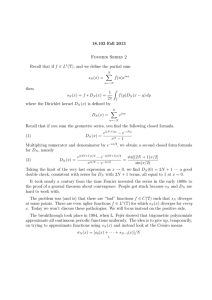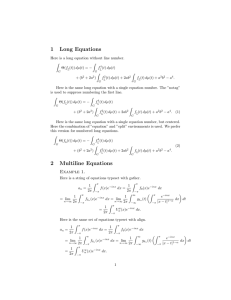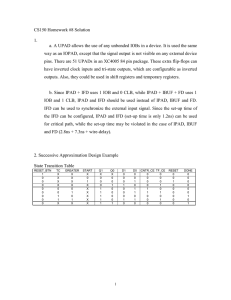Homework 1 - Math 541, Fall 2012
advertisement
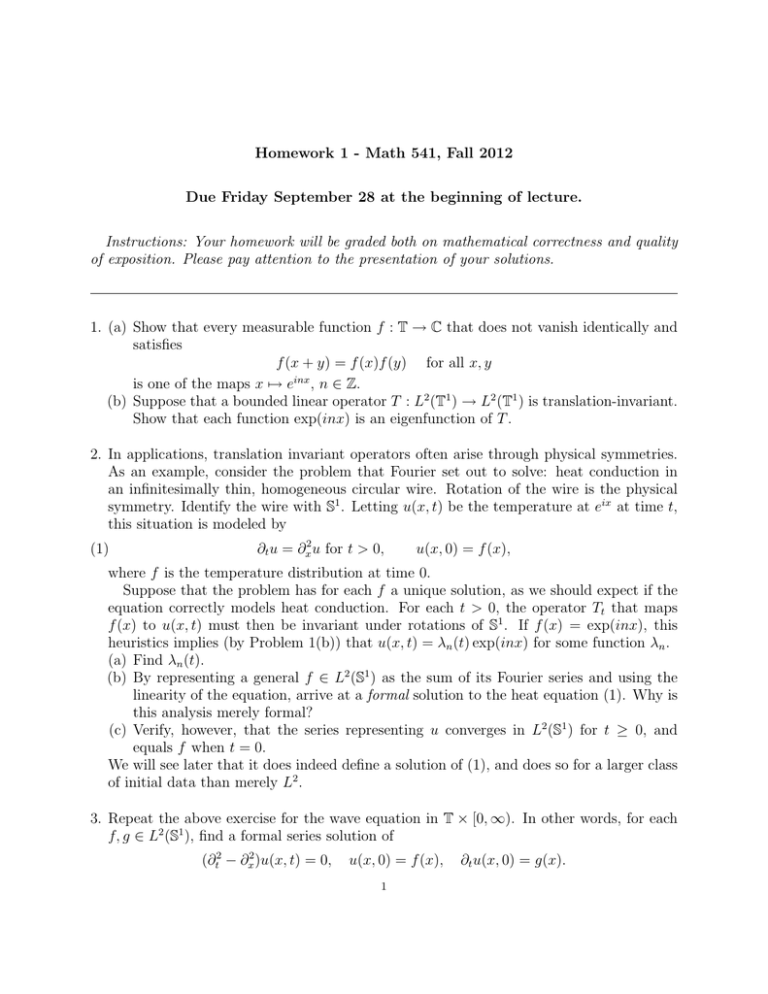
Homework 1 - Math 541, Fall 2012
Due Friday September 28 at the beginning of lecture.
Instructions: Your homework will be graded both on mathematical correctness and quality
of exposition. Please pay attention to the presentation of your solutions.
1. (a) Show that every measurable function f : T → C that does not vanish identically and
satisfies
f (x + y) = f (x)f (y) for all x, y
is one of the maps x 7→ einx , n ∈ Z.
(b) Suppose that a bounded linear operator T : L2 (T1 ) → L2 (T1 ) is translation-invariant.
Show that each function exp(inx) is an eigenfunction of T .
2. In applications, translation invariant operators often arise through physical symmetries.
As an example, consider the problem that Fourier set out to solve: heat conduction in
an infinitesimally thin, homogeneous circular wire. Rotation of the wire is the physical
symmetry. Identify the wire with S1 . Letting u(x, t) be the temperature at eix at time t,
this situation is modeled by
(1)
∂t u = ∂x2 u for t > 0,
u(x, 0) = f (x),
where f is the temperature distribution at time 0.
Suppose that the problem has for each f a unique solution, as we should expect if the
equation correctly models heat conduction. For each t > 0, the operator Tt that maps
f (x) to u(x, t) must then be invariant under rotations of S1 . If f (x) = exp(inx), this
heuristics implies (by Problem 1(b)) that u(x, t) = λn (t) exp(inx) for some function λn .
(a) Find λn (t).
(b) By representing a general f ∈ L2 (S1 ) as the sum of its Fourier series and using the
linearity of the equation, arrive at a formal solution to the heat equation (1). Why is
this analysis merely formal?
(c) Verify, however, that the series representing u converges in L2 (S1 ) for t ≥ 0, and
equals f when t = 0.
We will see later that it does indeed define a solution of (1), and does so for a larger class
of initial data than merely L2 .
3. Repeat the above exercise for the wave equation in T × [0, ∞). In other words, for each
f, g ∈ L2 (S1 ), find a formal series solution of
(∂t2 − ∂x2 )u(x, t) = 0,
u(x, 0) = f (x),
1
∂t u(x, 0) = g(x).
2
4. Show that the algebra L1 (Rd ) has no multiplicative unit.
5. In class, we proved a result that said that any bounded linear translation-invariant operator T : Cc (Rd ) → Cb (Rd ) can be represented as T f = f ∗ µ for some finite Radon measure
µ on Rd ). Show that the obvious analogue for T : Cb (Rd ) → Cb (Rd ) is false.
6. (a) Define the convolution of two finite measures µ and ν on Rd , so that your definition
agrees with the definition of convolution of functions f ∗ g when µ = f (x) dx and
ν = g(x) dx.
(b) Show that the convolution of any two finite measures is a finite measure whose total
variation satisfies
||µ ∗ ν|| ≤ ||µ|| · ||ν||.
7. Recall the three properties used to define an approximate identity sequence in Rd :
Z
(2)
ϕj → 1 as j → ∞,
Rd
(3)
(4)
sup ||ϕj ||1 < ∞,
j
Z
|ϕj (x)| dx → 0 as j → ∞, for all δ > 0.
|x|>δ
(a) Suppose that {ϕj } is a subset of L1 (Rd ) (not necessarily an approximate identity
sequence) satisfying ||f ∗ ϕj − f ||1 → 0 as j → ∞ for every f ∈ L1 . Prove that (2)
and (3) hold.
(b) Show that there exist sequences {ϕj } ⊆ L1 (Rd ) such that f ∗ ϕj → f uniformly for
all f ∈ Cc (Rd ), yet (4) fails.
(c) Likewise, show that there exist such sequences that satisfy ||f ∗ ϕj − f ||1 → 0 for all
f ∈ L1 (Rd ).

